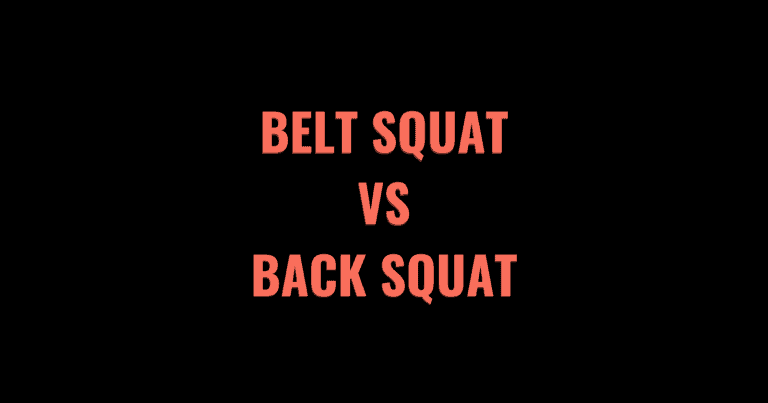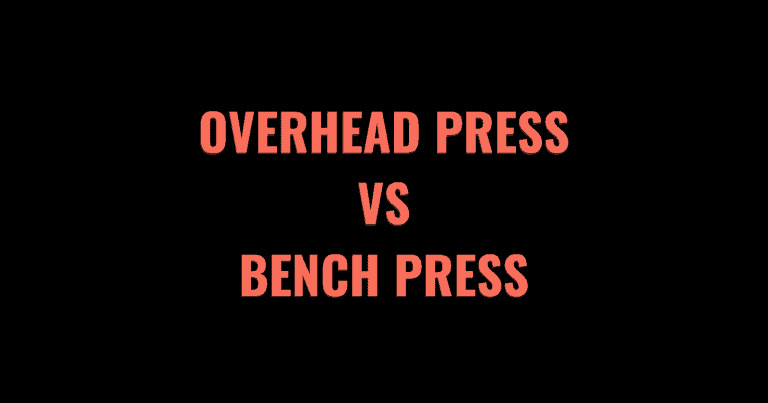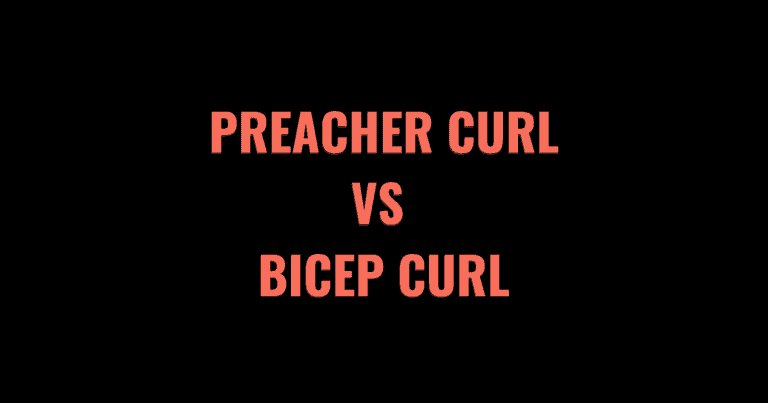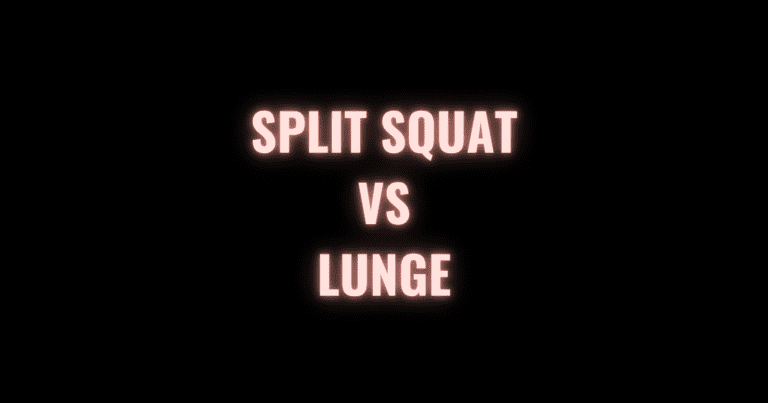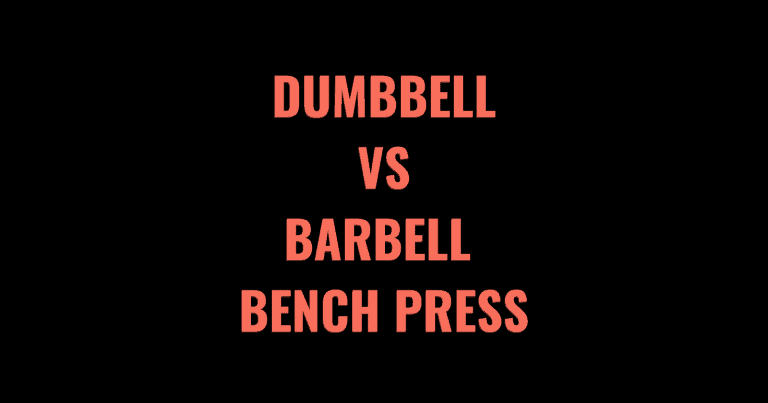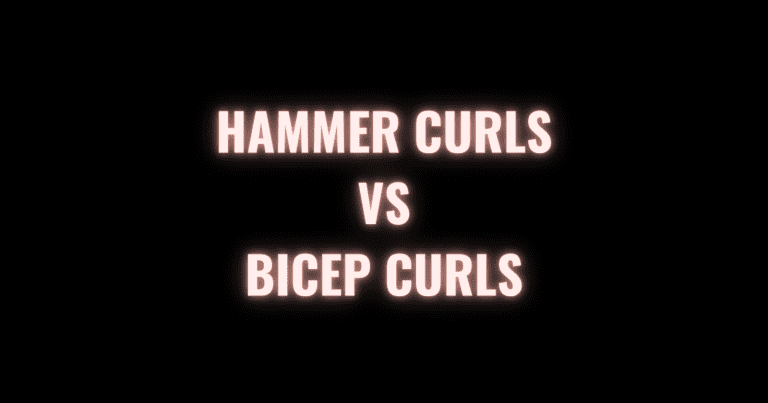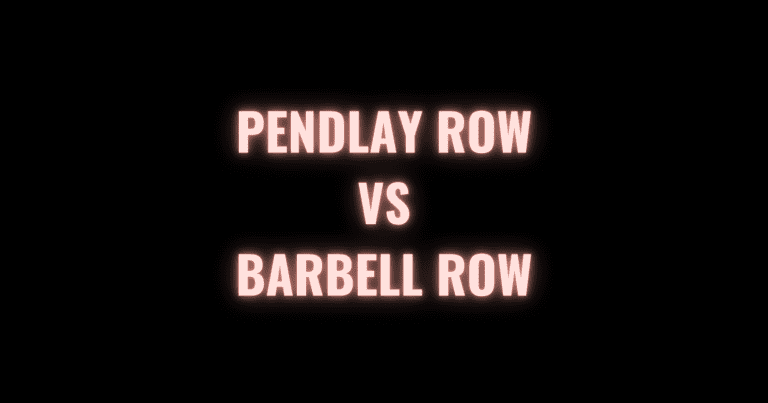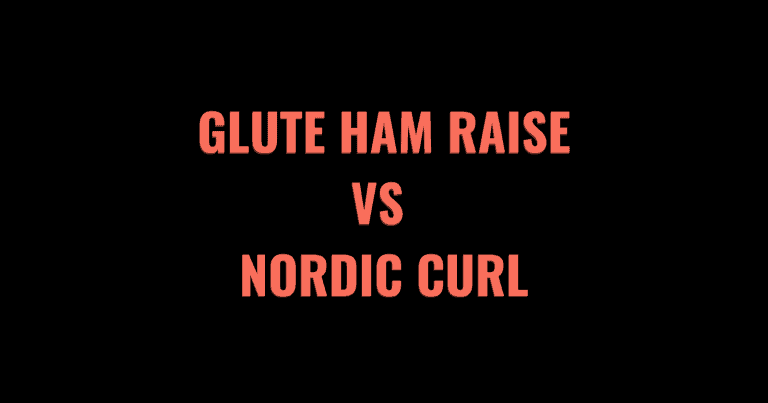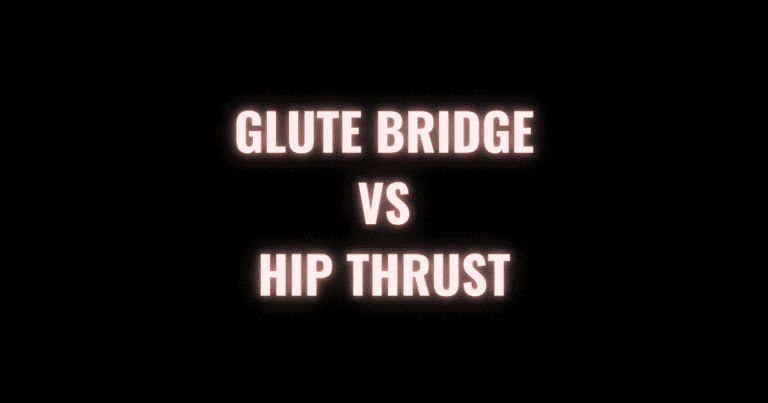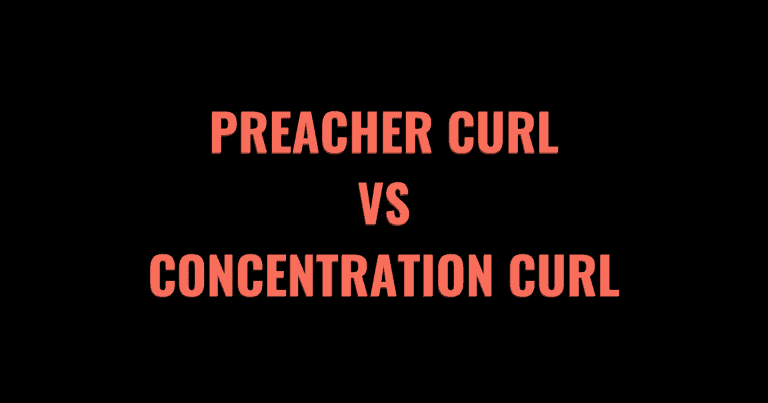Any gym-goer on a quest to build bigger and stronger legs will inevitably wonder which exercise is better, leg press or squats?
Some claim that the squat is the king of all exercises, and it’s the only movement necessary to build your legs. Leg press critics believe that the leg press is cheating and a lazy way to train your legs.
Others pride themselves on building massive legs without ever performing a traditional barbell back squat. More often than not, those that don’t squat utilize the leg press in order to grow their legs. These people also brag about how many plates they can leg press.
The good news is that both exercises are extremely effective at growing your legs, especially the quadriceps. Most would argue that both exercises should be included in your workout routine for maximal leg development.
However, if you had to choose just one, which would it be?
The answer depends on your biomechanics, goals, preferences, history of injury, and equipment availability.
This article will help you decide which one to incorporate into your routine by highlighting the differences between the leg press and squat, the pros and cons, how to perform each exercise correctly, and what muscles are primarily targeted.
Keep reading to see which exercise reigns supreme!
Table of Contents
- 1 What’s the main difference between the leg press and squat?
- 2 Pros and Cons
- 3 When To Perform an Exercise
- 4 Muscles Used
- 5 Exercise Form
- 6 Leg Press vs. Squat: Which one should you pick?
- 7 FAQs About the Leg Press and Squat
- 8 References
- 9 Other Exercise Comparison Posts
- 9.1 EZ Curl vs Straight Bar Curls: Differences, Pros, and Cons
- 9.2 Dips vs Bench Press: Pros & Cons
- 9.3 Belt Squat vs. Back Squat: Pros & Cons
- 9.4 Overhead Press vs. Bench Press: Pros, Cons, & Differences
- 9.5 Preacher Curl vs Bicep Curl: Differences, Pros, and Cons
- 9.6 Split Squat vs Lunge: Differences & Benefits
- 9.7 Dumbbell vs Barbell Bench Press: Differences and Pros & Cons
- 9.8 Hammer Curls vs Bicep Curls: Which is Better?
- 9.9 Pendlay Row vs Barbell Row: Differences and Benefits
- 9.10 Glute Ham Raise vs Nordic Curl: Differences and Benefits
- 9.11 Glute Bridge vs Hip Thrust: Differences & Benefits
- 9.12 Preacher Curl vs Concentration Curl: Which is Better?
What’s the main difference between the leg press and squat?
The main difference between the leg press and the squat is that the squat engages more muscles of the lower body and core compared to the leg press. The squat is a free weight exercise. In order to perform the movement properly, muscles of the core and lower back activate to stabilize the upper body.
The squat is also considered to be a more functional exercise since it closely resembles various movements people perform on a daily basis, such as sitting and standing. If you can perform squats with good technique (which we will cover in the Exercise Form section), then they are superior to the leg press.
Squats have greater carry-over to other lifts and activities of daily living, don’t require a machine to perform, and develop more muscles overall than the leg press.
On the other hand, the leg press is a machine exercise where your upper body is braced against a pad. Therefore, the legs are doing nearly all the work during a leg press, which is great for isolating the quads.
However, due to mobility, previous injuries, and other factors, a squat may not be best for your body. While the squat looks phenomenal on paper, it does have drawbacks that may make the leg press an attractive option. Here, we’ll dive deeper into the pros and cons of each!
Pros and Cons
Leg Press Benefits
The benefits of a leg press include:
- Compared to a barbell squat, the leg press is easier to learn because it has a less complex movement pattern.
- The leg press allows you to isolate the quads to a greater extent than barbell squats because the upper body is not a limiting factor.
- Going to failure on a leg press is safer than on barbell back squats. You don’t need a spotter because there are built-in safety bars on most leg press machines.
- You’re typically stronger on the leg press, allowing you to overload your quads with more weight.
- The leg press places less strain on the spine than barbell squats, which is better for those with lower back pain or previous injuries.
- Since it’s not a rare piece of equipment, most gyms have a leg press machine.
- The leg press allows you to train one leg at a time, whereas squats require both legs. Unilateral training helps correct and prevent any muscular or strength imbalances.
- You can move the position of your feet to target different muscles. For example, if your feet are low and closer together, you will isolate the quads. If your feet are high and wide, you’ll engage more glutes and hamstrings.
- It’s easier to perform advanced training techniques on a leg press, such as drop sets, rest-pause, etc., since the weights can easily be taken off.
- Overall, there’s less injury risk associated with the leg press compared to barbell squats.
- If you’re rehabbing from an ACL injury, the leg press is a great exercise to begin rebuilding your quad strength since the leg press does not load the ACL
Leg Press Cons
The disadvantages of a leg press include:
- Unlike barbell squats, the leg press keeps you in a fixed position, so the machine cannot be modified to suit your biomechanics.
- The leg press does not strengthen the stabilizing muscles like a barbell squat does, such as the core and erectors.
- You need a leg press machine in order to perform the movement.
- The leg press doesn’t increase jump performance as much as squats, which is a crucial skill for various sports. A 2016 study found that after 8 weeks of performing either a squat or a leg press, the squat group saw a greater increase in their squat jump and countermovement jump performance.
- The leg press doesn’t target the calves, adductors, glutes, and hamstrings as much as squats, making them inferior for overall leg development.
- The leg press doesn’t increase your 1-rep-max squat as much as a barbell back squat. If you’re competing in a sport that tests your squat strength, such as powerlifting or CrossFit, you should be regularly performing barbell squats.
- Although the leg press does improve lower body strength, it has less carry-over to activities of daily living compared to barbell squats.
- Another downside to a leg press is that the weight of the sled cannot be reduced. Although most people are strong enough to lift an empty sled, some may not be able to, so they can’t use the machine.
- Since you’re typically stronger on a leg press, your ego can get in the way, and you may be more apt to stack on too much weight and cut the range of motion short to cheat the movement.
Squat Benefits
Here are some benefits of squats:
- Squats engage numerous muscle groups, including the core, erectors, quads, calves, adductors, and abductors. It even activates the upper back/traps since the bar is resting on them.
- Squats are a very functional movement that translates to numerous activities outside of the gym, including a variety of sports.
- Squats strengthen the stabilizer muscles of the lower and upper body more than nearly any other exercise, including the leg press.
- A barbell squat is a free weight exercise (you aren’t restricted by a machine). Anyone can do it, regardless of their size.
- The squat requires minimal equipment; all you need is a barbell, plates, and a squat rack. However, you can start learning a squat with just your body weight.
- Squats improve athletic performance better than a leg press, especially in activities that involve jumping.
- Depending on your starting point, you can easily scale the difficulty of squats up or down. For some, 500lbs is considered difficult; for others, their body weight may be challenging enough.
- If you’re restricted by the amount of time you can spend in the gym or the number of days, there’s no better exercise that gives you a greater bang for your buck than squats.
- There are numerous squat variations, including front squats, back squats, goblet squats, pause squats, and heel-elevated squats, that can be used to provide a different stimulus to your body.
- Squats are very effective at strengthening and developing the entire lower body, as opposed to just the quads.
Squat Cons
Here are some disadvantages of squats:
- Due to the complex nature of the squat, it may take longer to learn and progress for beginners.
- When performing barbell back squats, the bar is placed on your upper back, which is uncomfortable for some beginners.
- The squat places a lot of strain on the spine, increasing the injury risk to the lower back.
- Poor shoulder, hip, and ankle mobility will limit your ability to perform a squat properly.
- There’s a greater injury risk associated with training to failure with squats compared to a leg press. If you are going to train to failure using squats, it’s best to have a spotter.
- Squats require several pieces of equipment. For most squat variations, you will need a barbell, squat rack, and some Olympic plates.
- The squat taxes the central nervous system (CNS) more than a leg press, so it may interfere with your recovery from session to session.
- It’s easy to cheat on a squat by cutting the range of motion short and not going below parallel (90 degrees).
When To Perform an Exercise
When to perform a leg press
Anyone that wants to primarily strengthen their quads but also engage their hamstrings and glutes should consider doing the leg press. If you lack the mobility, strength, or range of motion to do a squat, then the leg press is the next best alternative.
Furthermore, if you want to limit the amount of compression placed on your spine due to pain or injury, then a leg press is a better option than a squat.
The leg press is typically performed one to two times per week, depending on how many days you train and your workout split. Since the leg press targets the quads, glutes, and hamstrings, it’s primarily programmed in lower body sessions.
Since the leg press is quite a demanding compound exercise, it’s ideal to perform it near the beginning of a workout, especially if your goal is to grow your quads.
Lastly, the leg press is a great accessory movement to the squat, so you can perform both on the same day or on separate days of the week, depending on how many times you train your legs. The leg press will allow you to emphasize the quads without taxing your central nervous system.
When to perform a squat
Anyone competing in powerlifting, Olympic lifting, CrossFit, and other sports that require jumping, speed, or explosiveness, should consider doing squats. If you’re crunched for time and still want to work the majority of your body, squats are a great exercise.
Squats are a complex movement, so doing them more frequently (at least 1-2 times per week) will help you improve your technique. Since squats require so many muscles, doing them at the very beginning of a workout is a good idea.
Squats can be utilized for increasing lower body strength or hypertrophy depending on what rep range you select. For strength, aim for the 1-5 rep range, and for hypertrophy, aim for the 6-15 rep range.
Normally squats are programmed on leg days, but they may be performed on other days based on your goal, skill level, and ability to recover. For those that train full body, the squat is a popular exercise because of the high level of muscle engagement.
It’s important to remember that squatting is a skill that needs time to develop. The more you squat, the better you’ll get at the movement. Unlike a leg press, going to failure on a squat is not ideal because of form breakdown, compensation, and an increase in the risk of injury.
Muscles Used
Leg Press Muscles Used
The leg press primarily targets the quadriceps, but it also activates the hamstrings and glutes. If your feet are placed lower on the platform, your quads will be doing most of the work. Whereas, if your feet are positioned higher on the platform, your glutes and hamstrings will be more active.
Additionally, the farther you go past 90 degrees, the more glutes and hamstrings will be targeted. So if you want to keep most of the tension in your quads and minimize glute/hamstring involvement, then consider stopping the movement when your leg forms a 90-degree angle.
Primary Muscles
- Quadriceps
- Vastus Medialis
- Vastus Intermedius
- Vastus Lateralis
- Rectus Femoris
Secondary Muscles
- Hamstrings
- Biceps Femoris
- Semitendinosus
- Semimembranosus
Squat Muscles Used
To some extent, the squat works nearly every muscle in your body, but to keep things simple we will just focus on the main movers. The squat primarily targets the quadriceps, glutes, and hamstrings. Secondarily, the squat engages the adductors, abductors, calves, core, traps, and erectors.
Like the leg press, you can manipulate your feet placement, bar placement, and range of motion according to which muscles you would like to target. A wider stance will engage the glutes and hamstrings more, whereas a close stance will hit the quads. However, it’s more difficult to isolate a muscle using a squat compared to a leg press.
Primary Muscles
- Glutes
- Hamstrings
- Semimembranosus
- Semitendinosus
- Biceps Femoris
- Quads
- Rectus Femoris
- Vastus Lateralis
- Vastus Intermedius
- Vastus Medialis
Secondary Muscles
- Calves
- Gastrocnemius
- Soleus
- Adductors
- Abductors
- Gluteus Medius
- Core
- Rectus Abdominus
- Obliques
- Transverse Abdominus
- Erectors
- Traps
Here’s a full breakdown of the muscles worked by the squat.
Exercise Form
How to perform a Leg Press with Proper Form
How to perform a leg press properly:
- Adjust the machine to fit your body by moving the back of the pad up or down and the sled up or down.
- Your head and back should be comfortably braced against the back pad, and you should be leaning back at roughly a 45-degree angle. The sled should be positioned where there’s a slight bend in your knees.
- Once the machine is adjusted, sit down on the leg press.
- Place your feet in the middle of the platform using a hip-width stance. For best results, use flat-soled shoes to prevent your heel from rising off the platform.
- To begin the movement, unrack the sled by slightly extending your legs to raise the platform off the safety bars. Grab the handle located on each side and move them, so the safety bars are out of the way.
- Take a deep breath in and begin to lower the platform by bending your knees and hips in a controlled fashion.
- Once your legs are at or below 90 degrees, exhale and push through your heels to raise the platform back to the starting position.
- Avoid rounding your back at the bottom portion of the rep since it can place unnecessary strain on the lower back. At the top portion of the rep, keep a slight bend in your knees (do not lock out your knees).
- Repeat for the number of reps you’re aiming for.
- Warm-up using just the sled with no additional weight. After the warm-up, you can add the desired amount of weight.
Watch this video to see how to perform a leg press correctly and learn three different variations that you can utilize to grow your legs!
How to perform a Squat with Proper Form
How to perform a squat properly:
- Set up a squat rack so that the barbell is slightly lower than your shoulders.
- Unrack the barbell by stepping underneath the bar and placing it on your upper back/traps. Grab the bar on both sides to help keep the bar in place.
- Take two to three steps away from the rack.
- Stand with a slightly wider than hip-width stance and your toes slightly pointed out. Evenly distribute the weight between your toes and heels.
- Take a deep breath in, brace your core, and try to rotate your shoulders outward to engage the lats/upper back.
- While keeping a neutral neck and spine, begin to sit back by bending at the hips, knee, and ankles.
- Squat down until your legs are at or below parallel with the floor. Avoid rounding your lower back at the bottom of the rep since it places excessive strain on the lower back (also known as butt wink).
- After a brief pause at the bottom of the rep, exhale while evenly pushing through your midfoot and heels.
- Once you near the top of the rep, squeeze your glutes and hamstrings to achieve full hip and knee extension.
- Repeat for the desired number of reps.
- Start with an empty barbell to warm up before adding weight. Most Olympic barbells weigh ~45lbs.
Watch this video from Jeff Nippard to see how to do a squat with good form and common mistakes to look out for.
Leg Press vs. Squat: Which one should you pick?
The squat and the leg press both target the quads, glutes, and hamstrings, but if you had to choose just one, the squat wins this debate.
The squat is more functional, has greater carry-over to various lifts and activities of daily living, increases athletic performance, and engages more muscles compared to the leg press.
With that said, if you cannot squat due to a lack of mobility, previous injuries, equipment availability, or any other reason, then the leg press can be utilized to develop and strengthen your lower body.
Furthermore, the leg press is a great accessory lift to the squat. Rather than doing squats alone, you could do both! The leg press will allow you to add more volume to your quads while reducing injury risk and helping with fatigue management.
If you will be required to squat competitively for an upcoming competition or event, the squat should be emphasized. Otherwise, you should consider incorporating both into your workout to see which you prefer.
FAQs About the Leg Press and Squat
The leg press does not activate as many muscles as the barbell squat. Specifically, the barbell squat requires the recruitment of stabilizing muscles in the abdomen, mid-back, and low back that the leg press does not.
The squat also activates the glutes and hamstrings more effectively than the leg press.
Both the leg press and the squat effectively activate the quadriceps.
The leg press can be easily trained with one leg at a time, whereas it is more complicated, but not impossible, to perform single-leg squats.
References
- Wirth, K., et al. Dec. 2016. “Effect of 8 weeks of free-weight and machine-based strength training on strength and power performance.” Journal of Human Kinetics, vol. 53, 201–210. https://www.ncbi.nlm.nih.gov/pmc/articles/PMC5260589/
Other Exercise Comparison Posts
If you enjoyed this post, check out our comparisons of other popular exercises below.


